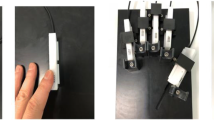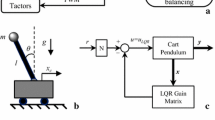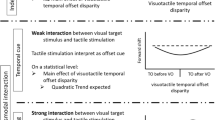Abstract
We use a vibrotactile-delayed match-to-sample paradigm to evaluate the effects of interference on working memory. One of the suggested mechanisms through which interference affects performance in working memory is feature overwriting: Short-term representations are maintained in a finite set of feature units (such as prefrontal neurons), and distractor stimuli co-opt some or all of those units, degrading the stored representation of an earlier stimulus. Subjects were presented with two vibrotactile stimuli and were instructed to determine whether they were of the same or different frequencies. A distractor stimulus was presented between the target and probe stimuli, the frequency of which was a function of the target stimulus. Performance on the task was affected by the frequency of the distractor, with subjects making more erroneous same judgments on different trials when the distractor frequency was closer to the probe than to the target, than when the distractor was further from the probe than the target. The results suggest that the frequency of the distractor partially overwrites the stored frequency information of the probe stimulus, providing support for the feature-overwriting explanation of working memory interference.
Similar content being viewed by others
References
Graham SJ, Staines WR, Nelson A, Plewes DB, McIlroy WE (2001) New devices to deliver somatosensory stimuli during functional MRI. Mag Res Med 46:436–442
Haegens S, Osipova D, Oostenveld R, Jensen O (2010) Somatosensory working memory performance in humans depends on both engagement and disengagement of regions in a distributed network. Hum Brain Map 31:26–35
Harris JA, Harris IM, Diamond ME (2001) The topography of tactile working memory. J Neurosci 21:8262–8269
Harris JA, Miniussi C, Harris IM, Diamond ME (2002) Transient storage of a tactile working memory trace in primary somatosensory cortex. J Neurosci 22:8720–8725
Harris JA, Arabzadeh E, Fairhall AL, Benito C, Diamond ME (2006) Factors affecting frequency discrimination of vibrotactile stimuli: implications for cortical encoding. PLoS One 1:e100. doi:10.1371/journal.pone.0000100
Hernandez A, Zainos A, Romo R (2000) Neuronal correlates of sensory discrimination in the somatosensory cortex. Proc Natl Acad Sci 97:6191–6196
Mercer T, McKeown D (2010) Interference in short-term auditory memory. Q J Exp Psych 63:1256–1265
Nairne J (1990) A feature model of immediate memory. Mem & Cog 18:251–269
Oberauer K (2009) Interference between storage and processing in working memory: feature overwriting, not similarity-based competition. Mem & Cog 37:346–357
Oberauer K, Kliegl R (2006) A formal model of capacity limits in working memory. J Mem & Lang 55:601–626
Postle B (2006) Working memory as an emergent property of the mind and brain. Neuroscience 139:23–38
Romo R, Brody C, Hernandez A, Lemus L (1999) Neuronal correlates of parametric working memory in the prefrontal cortex. Nature 399:470–473
Romo R, Hernandez A, Zainos A, Lemus L, Brody C (2002) Neuronal correlates of decision-making in secondary somatosensory cortex. Nat Neurosci 5:1217–1225
Singh R, Eliasmith C (2006) Higher-dimensional neurons explain the tuning and dynamics of working memory cells. J Neurosci 26:3667–3678
Sörös P, Marmurek J, Tam F, Baker N, Staines WR, Graham SJ (2007) Functional MRI of working memory and selective attention in vibrotactile frequency discrimination. BMC Neurosci 8:48
Spitzer B, Wacker E, Blankenburg F (2010) Oscillatory correlates of vibrotactile frequency processing in human working memory. J Neurosci 30:4496–4502
Zhou Y, Fuster J (1996) Mnemonic neuronal activity in somatosensory cortex. Proc Natl Acad Sci 93:10533–10537
Acknowledgments
This work was supported by the Canada Research Chairs program (PS) and the Natural Sciences and Engineering Research Council of Canada (PS). We thank William Hockley and an anonymous reviewer for their helpful comments. We thank Wendell Prime for technical assistance.
Author information
Authors and Affiliations
Corresponding author
Rights and permissions
About this article
Cite this article
Bancroft, T., Servos, P. Distractor frequency influences performance in vibrotactile working memory. Exp Brain Res 208, 529–532 (2011). https://doi.org/10.1007/s00221-010-2501-2
Received:
Accepted:
Published:
Issue Date:
DOI: https://doi.org/10.1007/s00221-010-2501-2




